Cleveland National Forest
by TourGuideTimLocation: Cleveland National Forest (1 Hour Drive from the Coastal Areas of San Diego)
Cost: Most Visitors Will Need An Adventure Pass – $5 per Day or $30 per Year.
Features: Mountains, Meadows, Views of Ocean and Desert; Scenic Drives; Eagles; Falcons; Trails for Hiking, Biking, and Horseback Riding; Campground & RV Sites
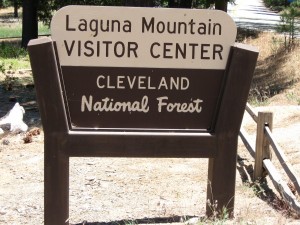 Cleveland National Forest Highlights: This National Forest covers over 460,000 acres (more than 700 square miles) stretching from the border with Mexico, up through the mountains in the middle of San Diego County, and into Orange and Riverside Counties. Not all of the National Forest is contiguous since there is private property, State Parks, County Parks, and Bureau of Land Management holdings interspersed in and around the National Park.
Cleveland National Forest Highlights: This National Forest covers over 460,000 acres (more than 700 square miles) stretching from the border with Mexico, up through the mountains in the middle of San Diego County, and into Orange and Riverside Counties. Not all of the National Forest is contiguous since there is private property, State Parks, County Parks, and Bureau of Land Management holdings interspersed in and around the National Park.
Cleveland National Park’s moutains are part of the Peninsular Ranges, which stretch into Mexico, and the Pacific Coast Ranges, which stretch all the way to Alaska. Along the eastern edge of the mountains is the Anza-Borrego Desert State Park, which is part of the larger Colorado Desert.
Cleveland National Forest is separated into three Park Ranger Districts. This page covers the two districts in San Diego County. The Palomar District is in the northern part of San Diego County and surrounds Palomar Mountain and Palomar State Park. This area is the lesser used of the two districts since it is more remote from Downtown San Diego. You can access it from the two lane roadways (SR-76, SR-78, and SR-79). The Descanso District is in the southern part of San Diego County. It includes the popular Laguna Mountains and surrounds the southern portion of Cuyamaca State Park. This area of the Forest is easily accessible from highway I-8. Near the center of the two Districts is the historic town of Julian, a popular destination for tourists seeking to get away from the city and enjoy life in a remote mountain town.
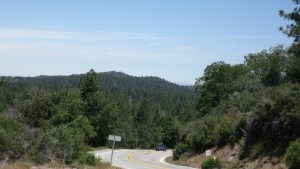 You will find hundreds of miles of trails through mountains and meadows. There are trails for hiking, horseback riding, mountain biking, and off-roading. In many locations you can enjoy views of both the Pacific Ocean to the west (on a clear day) and the Anza Borrego Desert to the east, while standing on mountain tops that range well over 6,000 feet above sea level. The Palomar District is covered more with pine trees while the Descanso District has more oak trees.
You will find hundreds of miles of trails through mountains and meadows. There are trails for hiking, horseback riding, mountain biking, and off-roading. In many locations you can enjoy views of both the Pacific Ocean to the west (on a clear day) and the Anza Borrego Desert to the east, while standing on mountain tops that range well over 6,000 feet above sea level. The Palomar District is covered more with pine trees while the Descanso District has more oak trees.
Some visitors choose to spend just a few hours of their day driving into the Forest from the San Diego Coast. There are a number of lookout points along the scenic roadways through the mountains. Others decide to spend a weekend or longer at one of the campgrounds or lodges.
There is a Ranger Station in each District open on weekdays from 8AM – 4:30PM. There is also a Laguna Mountain Visitors Center in the Descanso District open on Fridays, Saturdays, and Sundays. Look farther down this page for more details and directions to reach these locations, where you can obtain maps and other Forest related information. Before your visit, it is recommended you check the public advisories page or call a recorded hotline at 1-619-593-2183 for any alerts such as wild fires or snow storms that may limit the level of activity allowed in the Forest.
When to Visit Cleveland National Forest
- Check the Mountain Weather Forecast. Weather is generally good year-round for outdoor activities but it can get chilly and snow a couple times during the winter and get hot a few times during the summer.
- Weekends during the summer and fall are the busiest times of the year, especially in the Descanso District. However, the Forest is so big you will not notice any crowds.
- Fall is the best time of year to visit when leaves are changing colors and the temperatures are near perfect.
- However, fall is also the time of year we occasionally see Santa Ana Winds in the forecast. Santa Ana winds bring heat, wind, and dry air. This makes it bad for those who suffer from allergies. On the other hand, Santa Ana Winds bring great visibility for visitors to see long distances from mountain top vistas.
- If there is snow, you may be required to wrap snow chains around your tires. You should purchase them at a local auto supply store before heading into the mountains. You can expect heavy traffic and long delays in the Laguna Mountains right after a snow storm when the highway patrol sets up checkpoints when snow chains are required. There are much fewer delays, if any, heading into the more northern Palomar Mountain area since it is farther away from the city.
What to Expect
- You will find a mix of dense forest and open meadows in a mountainous area.
- Throughout the Forest you will see an array of trails used for fire protection. These same trails make it easy to traverse the mountainous terrain on foot, bike, or horseback.
- Wildfires swept through some areas of the Forest in 2003 and 2007. The effected areas have seen new growth. You will have the opportunity to compare and contrast the old with the new and see first hand how a forest rejuvenates after a fire.
- Picnic areas are available for visitors traveling through the Forest during the day. There are large signs at the entrance to all of the picnic areas. In the north, you will find the San Luis Rey Picnic Area on highway SR-76 just north of Lake Henshaw and the Inaja Memorial Picnic area on highway SR-78, just east of Santa Ysabel. In the Laguna Mountain area, you will find two picnic locations along the Sunrise Highway (S-1) that enjoy great views looking over the desert. The Desert View Picnic area is just north of the Visitors Center while the Pioneer Mail Picnic Area is five mile further north. You should see the picnic areas labeled on most road maps.
- Don’t take any souvenirs of nature out of the Forest since it is illegal to take any elements of nature out of a National Park.
- Visitors often include a trip into nearby Julian to stroll along a quaint street full of shops, restaurants, and attractions. You will also find bed & breakfasts in Julian and the surrounding area.
Birds of Prey – Golden Eagles and Prairie Falcons make their year-round home in San Diego’s Cleveland National Forest. There are about 46 pairs of Golden Eagles and upwards of 30 pairs of Prairie Falcons. The best area to look for these birds of prey are in the Ramona Grasslands and San Diego River Gorge.
- The Ramona Grasslands are not open to the public. However, efforts are underway to preserve the Ramona Grasslands and adjoining properties with the possibility of trails being added for visitors. You can see the Golden Eagles and Prairie Falcons by attending the Hawk Watch Events hosted by the Wildlife Research Institute each January and February.
- Adjacent to the forest location near the San Diego River Gorge is the Eagle Peak Preserve. Relative to the Ramona Grasslands, the birds of prey are less likely to be seen around Eagle Peak Preserve. However, the beauty of the area is worth the visit if you want to try and steal a glimpse of an eagle or falcon. You will need to access the 7 mile dirt road leading to the Preserve from Julian.
Spotting Migratory Birds – The Cleveland National Forest hosts over 200 species of birds. A list of birds spotted in the forest has been compiled as a resource for bird watchers. Popular places for birdwatching in the Cleveland National Forest include the Lake Henshaw Overlook and the Laguna Meadow.
- Henshaw Overlook is in the Palomar District and is located along S-7, also known as the East Grade. It is a few minutes drive up a curvy road from the intersection with SR-76. The outlook viewpoint has a small parking area that can be seen on the satellite image from this Google Map. You can then zoom out and use Google Maps for directions to reach the south end of Lake Henshaw. (The overlook is on the northwest side of Lake Henshaw.) It is a little over 60 miles from Downtown San Diego and will take about 1.25 hours to reach by car.
- Laguna Meadow is in the southern Descanso District and surrounds Big Laguna Lake. It is accessible from the Big Laguna and Sunset Trails, which are on the left side of the Mount Laguna Map. The Sunset Trail is the easier of the two and can be accessed from Sunrise Highway, just five miles north of highway I-8. (See the directions for the Mount Laguna Visitors Center below to reach Sunrise Highway from the I-8.) The trailhead starts near an information kiosk where you can park. For more information about these hiking trails, select the trail links on the aforementioned map or get Afoot & Afield in San Diego County by Jerry Schad. This book provides great details of when to go and where to look to make the most of your trip, such as catching ocean views along the Sunset Trail or desert views along the Big Laguna Trail.
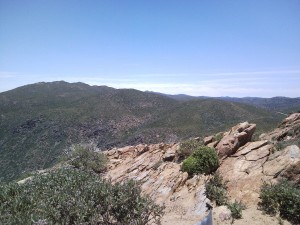 Recreation Trails – The Forest web site lists 44 trails in the Palomar and Descanso Districts. They range in length from a half mile to 23 miles. Some are just open to hikers while others are open to equestrians, mountain bikes, dirt bikes, and off-road vehicles. (Note, on the Palomar District trails, only hikers and equestrians are allowed.) You can click on the trail names to obtain details on hiking trail starting and ending points as well as level of difficulty. Some of the trails are a part of the 2,650 mile Pacific Crest Trail. For a more detailed description on hiking trails, such as where to look and when to go, you should considering getting Afoot & Afield in San Diego County by Jerry Schad.
Recreation Trails – The Forest web site lists 44 trails in the Palomar and Descanso Districts. They range in length from a half mile to 23 miles. Some are just open to hikers while others are open to equestrians, mountain bikes, dirt bikes, and off-road vehicles. (Note, on the Palomar District trails, only hikers and equestrians are allowed.) You can click on the trail names to obtain details on hiking trail starting and ending points as well as level of difficulty. Some of the trails are a part of the 2,650 mile Pacific Crest Trail. For a more detailed description on hiking trails, such as where to look and when to go, you should considering getting Afoot & Afield in San Diego County by Jerry Schad.
(Note, although it is very rare to see a mountain lion, stay alert to your surroundings. If you happen to encounter a mountain lion, make a lot of noise, stand tall, and throw your hands in the air above your head to scare it off. Read the adjacent Cuyamaca State Park’s Mountain Lion brochure for more information. Also, bring along a cell phone. You will find there is good coverage in most, but not all, of the Forest.)
Stargazing – The San Diego Mountains are a very popular destination for stargazing. It provides one of the best venues in the country for looking into outer space and is home to both the Palomar and Laguna Observatories. When special astronomical events are taking place above the earth, including the Perseid Meteor Showers in late August, it is not uncommon to encounter major traffic jams at 2AM in the morning heading back towards the San Diego Coast.
Throughout the year, there are a number of opportunities to explore outer space with the help of local astronomy organizations.
- Explore the Stars – In the Palomar District, the Cleveland National Forest and the nearby Orange County Astronomers Club hosts stargazers of all ages. Amateur astronomers provide an educational program and then set up telescopes on the camp grounds two miles from the Palomar Observatory for visitors to enjoy gazing at the stars and distant planets. (Learn more about the Palomar Observatory and other star gazing programs held in one of the best spots for star gazing in the country.) The Explore the Stars program, held monthly from April through October, is free. Typically, a hundred or more visitors show up for the event and many stay overnight at the Palomar Observatory Campground.
- Star Party – In the Descanso District, the San Diego State University Department of Astronomy hosts stargazers at their Mount Laguna Observatory. You will have the opportunity to look out into the heavens while asking questions from members of the Astronomy department. The events take place on various Saturdays throughout the year. There is not a published schedule. You can call the Laguna Mountain Visitor Center at 1-619-473-8547 on weekends to see if they have free tickets for upcoming Star Parties.
Off Highway Vehicles – You can use off-road vehicles, such as registered ATVs, in the Corral Canyon area of the southern Descanso District. Each year, adjustments are made to the off road vehicle maps for Cleveland National Forest. Visit Off Highway Vehicle Routes page frequently to see a list of current maps, proposals, and community forums for off road vehicle trails.
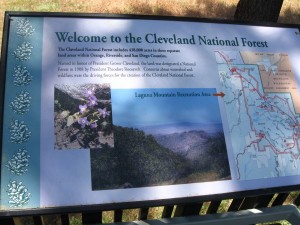 Forest Information – You can learn more about the Forest including hunting activities, the archeology and history of the Forest, and opportunities to own private residences in the Forest. To learn about the History of the Cleveland National Forest, the former Cleveland National Park Historian James Newland has written a book that includes images of historical events and the spectacular views.
Forest Information – You can learn more about the Forest including hunting activities, the archeology and history of the Forest, and opportunities to own private residences in the Forest. To learn about the History of the Cleveland National Forest, the former Cleveland National Park Historian James Newland has written a book that includes images of historical events and the spectacular views.
Visitor Guide – This printable 12 page guide provides an overview and maps of each of the districts in the Cleveland National Forest.
Ramona Ranger Station – Serving the Palomar District, the Ramona Ranger Station is located just north of SR-78, which takes you to Santa Ysabel Valley and intersects with SR-79. These are the two main roadways used to access the Palomar District of the Cleveland National Forest. It is 40 miles (1 hour) northeast of Downtown San Diego. Their phone number is 1-760-788-0250.
Here are the directions to the Ranger Station in Ramona from Google Maps. The address is 1634 Black Canyon Rd in Ramona, CA 92065. (Visit our page about traffic in San Diego to learn more.)
Alpine Ranger Station – Serving the Descanso District, the Alpine Ranger Station is located right next to highway I-8 before you reach SR-79 and S1 (Sunrise Highway), the two main roadways used to access the Descanso District of the Cleveland National Forest. It is just 32 miles (25 minutes) east of Downtown San Diego. Their phone number is 1-619-445-6235.
Here are the directions to the Ranger Station in Alpine from Google Maps. The address is 3348 Alpine Boulevard in Alpine, CA 91901. (Note, Google Maps suggests you get off I-8 at Tavern Road. It is faster if you go to the next exit at Willows Road. From this exit, the Ranger Station is only 1 mile away. Make a right at Willows Road and another right on Alpine Boulevard.) Visit our page about traffic in San Diego to learn more.
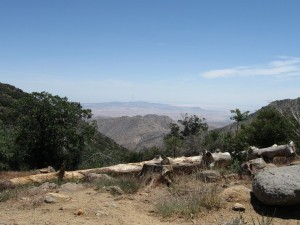 Laguna Mountain Visitors Center – This is the only visitor center for the Cleveland National Forest. It is generally open Fridays from 1PM – 5PM, Saturdays from 9AM – 5PM, and Sundays from 10AM – 3PM. The Visitor Center on Laguna Mountain is operated by the Laguna Mountain Volunteer Association. In addition to selling Adventure Passes and trail maps, the Visitor Center offers wildlife displays, an indoor area for rest, and a gift shop.
Laguna Mountain Visitors Center – This is the only visitor center for the Cleveland National Forest. It is generally open Fridays from 1PM – 5PM, Saturdays from 9AM – 5PM, and Sundays from 10AM – 3PM. The Visitor Center on Laguna Mountain is operated by the Laguna Mountain Volunteer Association. In addition to selling Adventure Passes and trail maps, the Visitor Center offers wildlife displays, an indoor area for rest, and a gift shop.
Directions from Google Maps to Mount Laguna, CA. The Visitor Center is located at the corner of State Highway 1 (S1), better known as Sunrise Highway (labeled Sunrise Scenic Byway on Google Maps) and Los Huecos Road. It is 56 miles east of Downtown San Diego and will take just over an hour to reach the Mount Laguna Visitor Center. The last 10 miles are driven on Sunrise Highway, which is a well maintained but windy and hilly two-lane road. It is located next to the Mount Laguna Lodge, which is noted in more detail in the Lodging section below. (Visit our page about traffic in San Diego to learn more.)
Campgrounds – There are 10 campgrounds plus an additional 10 group camp sites in the San Diego County portion of the Cleveland National Forest. All of the group camp sites require reservations. The largest group campground can hold up to 110 guests.
For non-group campgrounds, only two offer reservations. Both are in the Laguna Mountain area. The others are first come, first serve.
Both the non-group and group campground pages provide an informative chart on the location, facilities, recreational options, and the additional cost beyond the Adventure Pass. Most camp sites cost $10 – $20 for a day but a few only require an Adventure Pass. The Group Camp Sites cost a little more. Be sure to select the campground name for more details, including closures. For example, the Boulder Oaks Equestrian Camp is closed March, April, and May to protect a federally endangered toad. RVs are welcome on most camp sites. Open fires are not allowed except in designated campground sites.
For those looking to enjoy remote camping away from the campgrounds, there are a few options noted by the Mount Laguna Volunteer Association.
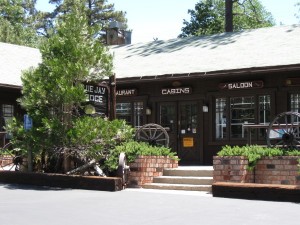 Lodging – For those who want to enjoy an overnight stay in the forest but prefer full access to plumbing, electricity, and a fireplace, consider staying in motel rooms or cabins at one the two lodges. Rates start at just $55 per night. The lodges are less than a quarter mile apart, sitting up high on Mount Laguna, next to the Mount Laguna Visitors Center. The Blue Jay Lodge is the first one you will see if you head into the mountains on Sunrise Highway coming from highway I-8. It is geared toward a more intimate setting and prohibits kids, guests, and pets. Reservations for The Blue Jay Lodge can be made by calling Dr. Oats at 858-488-3900. The Mount Laguna Lodge is open to all and just beyond it is the Mount Laguna Visitors Center. The Blue Jay Lodge offers dining on weekends while the Mount Laguna Lodge offers groceries and a gift shop open daily.
Lodging – For those who want to enjoy an overnight stay in the forest but prefer full access to plumbing, electricity, and a fireplace, consider staying in motel rooms or cabins at one the two lodges. Rates start at just $55 per night. The lodges are less than a quarter mile apart, sitting up high on Mount Laguna, next to the Mount Laguna Visitors Center. The Blue Jay Lodge is the first one you will see if you head into the mountains on Sunrise Highway coming from highway I-8. It is geared toward a more intimate setting and prohibits kids, guests, and pets. Reservations for The Blue Jay Lodge can be made by calling Dr. Oats at 858-488-3900. The Mount Laguna Lodge is open to all and just beyond it is the Mount Laguna Visitors Center. The Blue Jay Lodge offers dining on weekends while the Mount Laguna Lodge offers groceries and a gift shop open daily.
Food – Other than what is mentioned in the Lodging section above for Mount Laguna, there are very few options for food once you enter into the Cleveland National Forest. The historic town of Julian lies between the Palomar and Descanso Districts. It offers a number of food options, including its famous Apple Pies. There is a full service restaurant just a few miles south of Julian (closer to the Laguna Mountains) at Lake Cuyamaca. A popular food option in the Palomar District is the Palomar Mountain General Store, which is found on the way up to the Palomar Observatory.
Information on Visiting Cleveland National Forest
Fees: (Costs are Approximate)
- There is no cost if you just plan to drive through the Cleveland National Forest and enjoy the scenery.
- You need an Adventure Pass if you plan to park at any point during your visit to the Cleveland National Forest. Adventure Passes cost $5 for the Day or $30 for the year. (You do not need an Adventure Pass if you are visiting the much less used areas south of highway I-8. Everything noted on this web page covers the areas north of I-8.) You can buy the Adventure Passes at the Ranger Stations or the Laguna Mountain Visitors Center. For those using highway I-8, the Chevron gas station right off the Tavern Road exit in Alpine sells the Adventure Pass. You can also buy the Adventure Pass online or look at a full list of retailers that sell the Passes. The Adventure Pass hangs on your car’s rear view mirror.
- Some Tent and RV Sites only require an Adventure Pass. Others cost from about $10 – $20 a day.
Related Attractions – You may also be interested in visiting Cuyamaca State Park and Lake Cuyamaca, which lie between the Palomar and Descanso Districts. Cyclists should check out bike ride events in the San Diego Mountains and Desert.
Find More Attractions with Similar Themes or Location: *Top San Diego Attractions*, Astronomy & Outer Space, Bicycling, East County, Hiking, Horse Carriages, Riding & Racing, Horseback Riding, Julian, Laguna / Southern Mountains, Mountain Adventure, North County Inland, Palomar / Northern Mountains, Parks - Local, State & National, Picnics - Great Places, Scenic Drives, Scenic Views, Wildlife - Places to See |
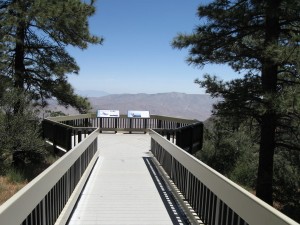
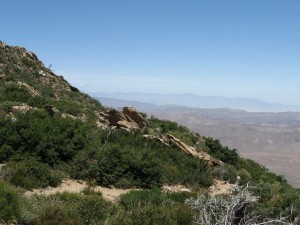

 Print the San Diego Map
Print the San Diego Map Print the La Jolla Map
Print the La Jolla Map




 San Diego Attractions on Twitter
San Diego Attractions on Twitter